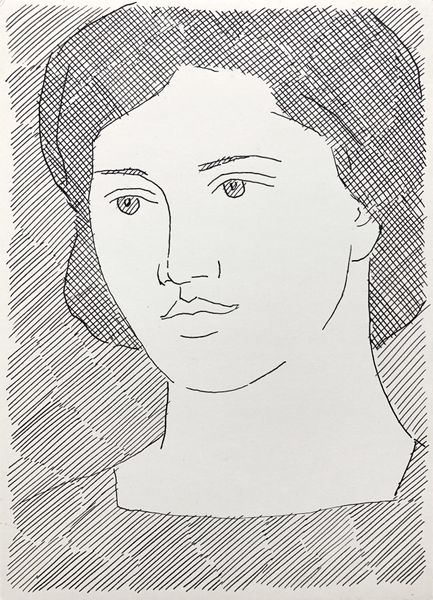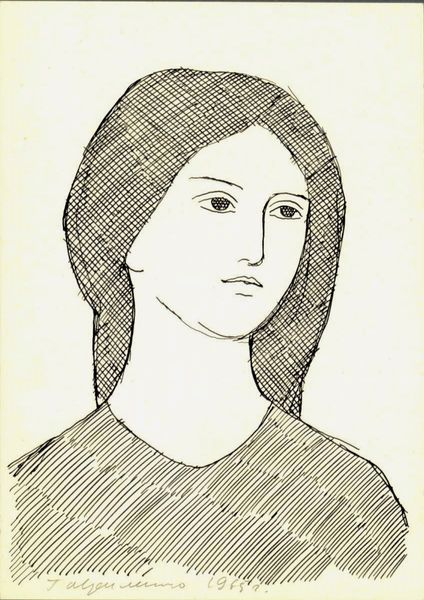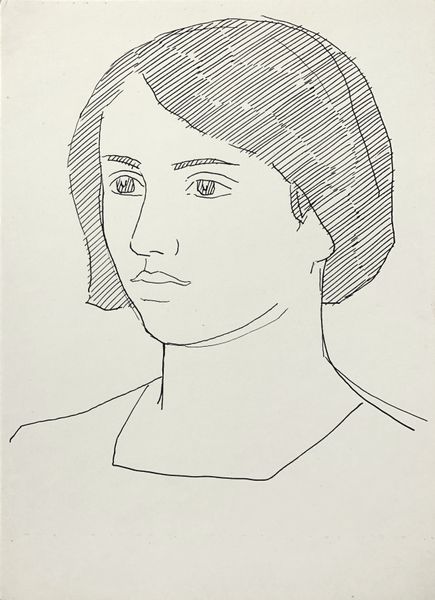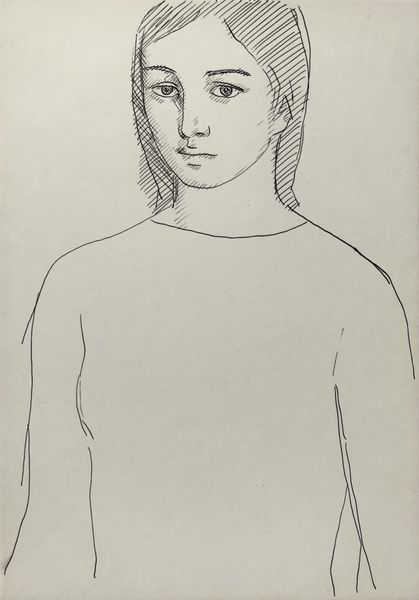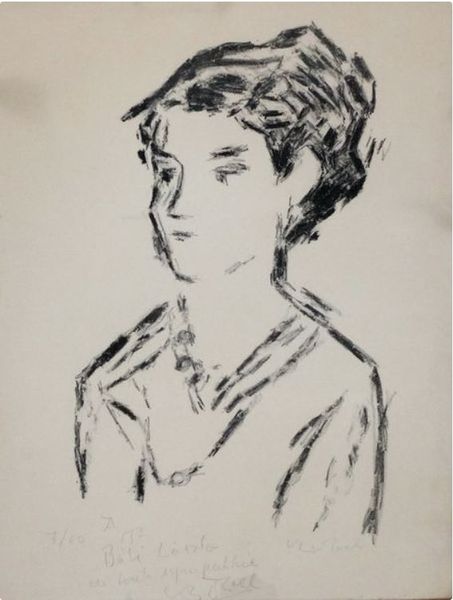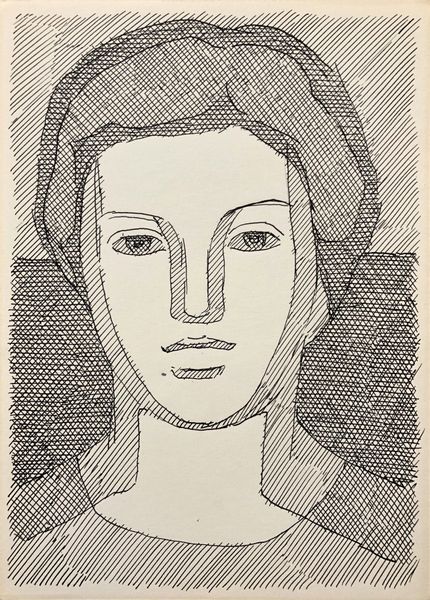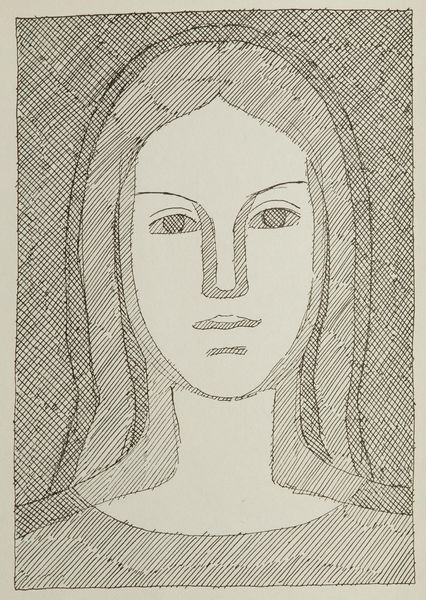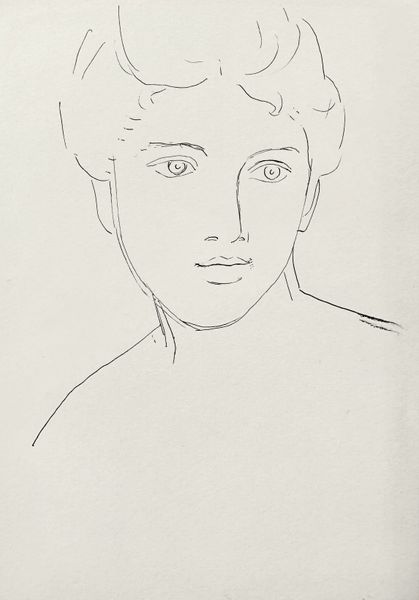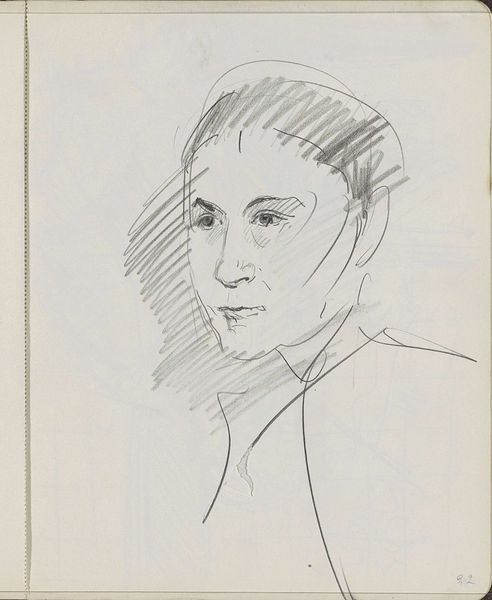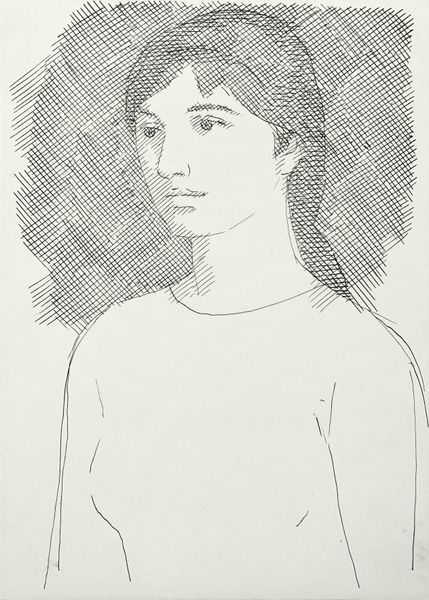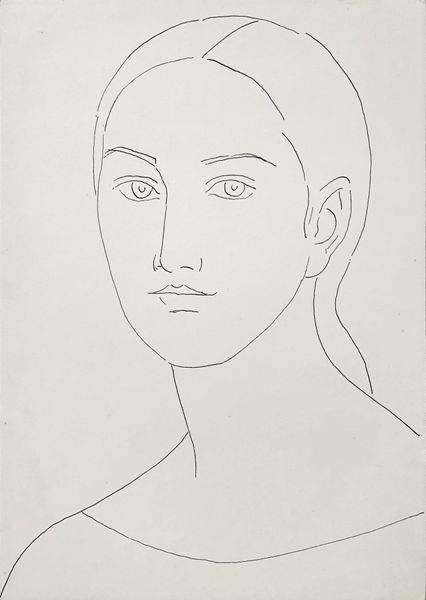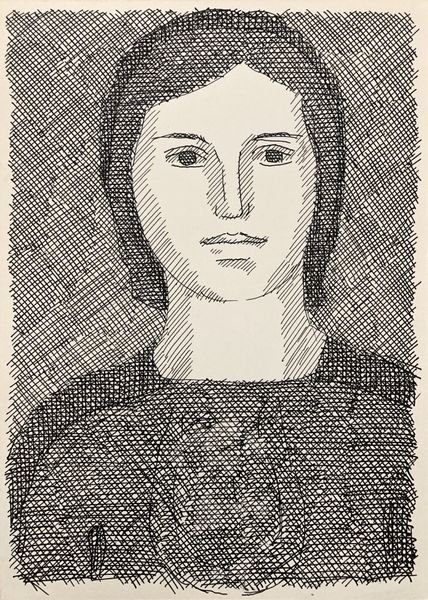
drawing, ink, pen
#
portrait
#
drawing
#
facial expression drawing
#
self-portrait
#
head
#
face
#
pen illustration
#
pen sketch
#
pencil sketch
#
old engraving style
#
cartoon sketch
#
personal sketchbook
#
ink
#
sketch
#
pen-ink sketch
#
sketchbook drawing
#
nose
#
pen
#
portrait drawing
#
forehead
#
modernism
#
realism
Copyright: Hryhorii Havrylenko,Fair Use
Curator: Taking a look at Hryhorii Havrylenko's "Female Portrait (Portrait of G. Zavarova)," created around 1960, immediately pulls me into the mid-century art scene in the Soviet Union. It's a rather intimate drawing, done in pen and ink, currently held in a private collection. Editor: There's a kind of melancholic stillness about it, isn't there? The stark lines, the shadowing. She looks thoughtful, perhaps even a little burdened by something. It has this simple pen and ink hatching filling out shapes with quick, repetitive marks and giving shape and mood. Curator: Given its creation within the politically charged environment of the 1960s Soviet Union, portraits, particularly of women, served various socio-political roles. They were used to celebrate socialist ideals, portray the 'new woman,' or sometimes simply to create intimate, personal artworks amidst the official artistic discourse. Havrylenko walks this fine line, no? Editor: Exactly. This reminds me of that traditional symbol, the melancholic muse. Look at her gaze – slightly downward, introspective. The tight linework gives a constrained energy like it would burst out in an emotional reaction if it were able to release. Curator: Absolutely, and thinking of the artistic climate, art was heavily monitored and had to contribute to the communist narrative. A work like this may hint at subdued individualism which could subtly challenge norms. This portrait feels deeply human, a focus on her individual essence rather than a symbol. Editor: Yes, though this doesn't come through directly, the visual language almost borrows from historical engravings, yet simplified. It carries a weight of past imagery yet feels definitively modern, as if the artist sought a kind of timeless representation. Curator: It highlights the artist’s engagement with broader art historical movements, like the rise of realism and modernism, while contextualizing those styles in the realities of Soviet cultural control. Editor: This gives us a look into a life from the 1960s, rendered with techniques that borrow historical elements, which adds so many layers of interpretation. Thanks! Curator: It's an interesting intersection of artistic expression and social commentary that encourages deeper reflection, yes. It’s that silent conversation it holds that truly draws you in, no?
Comments
No comments
Be the first to comment and join the conversation on the ultimate creative platform.
